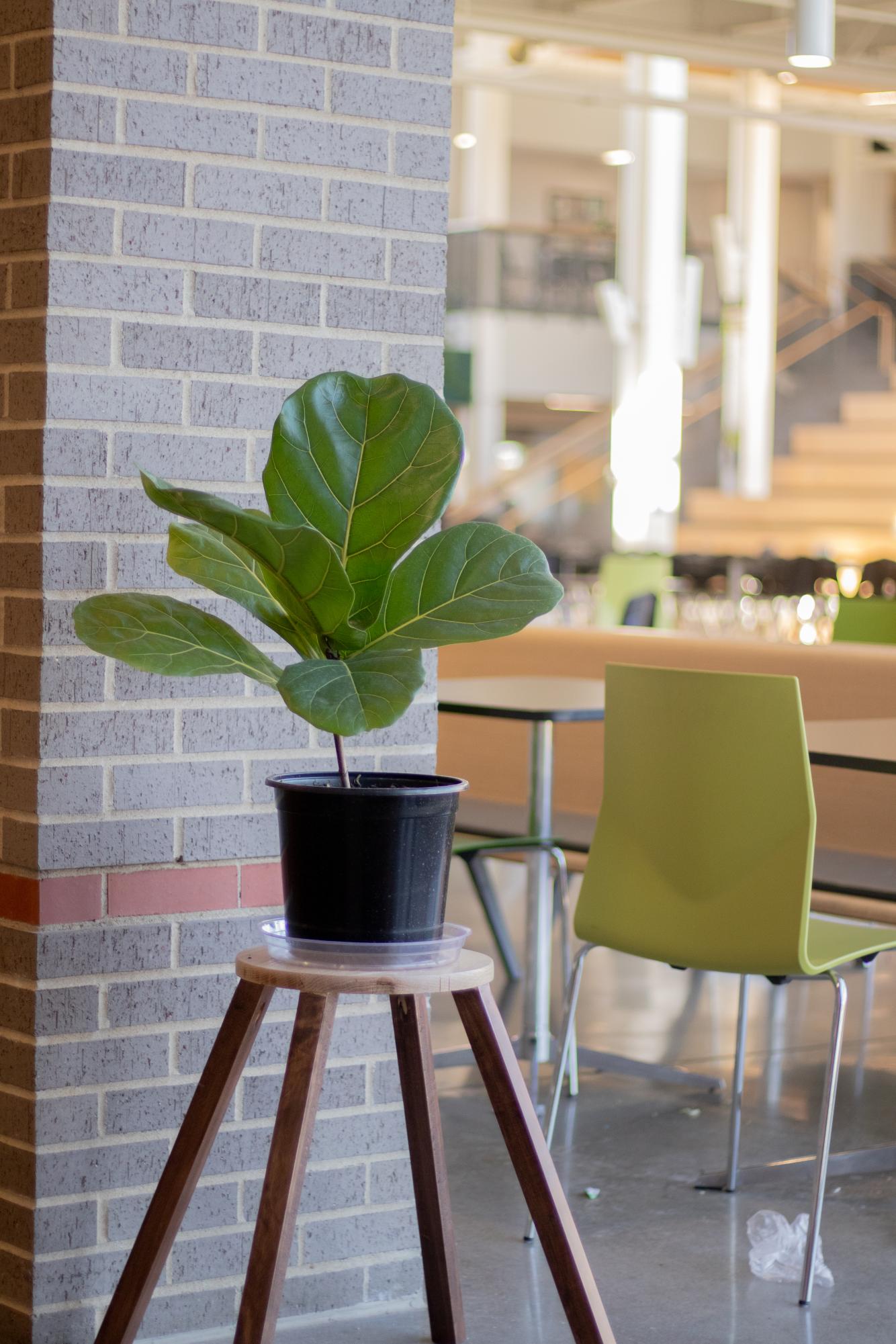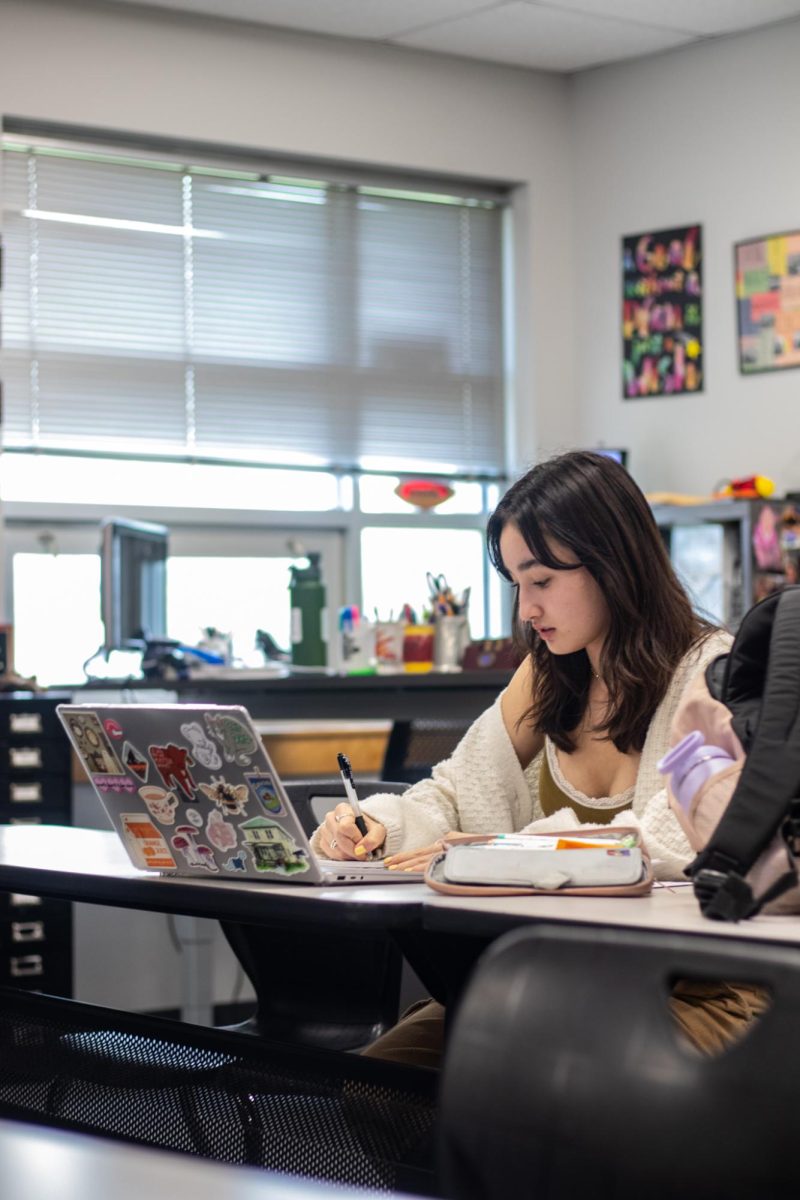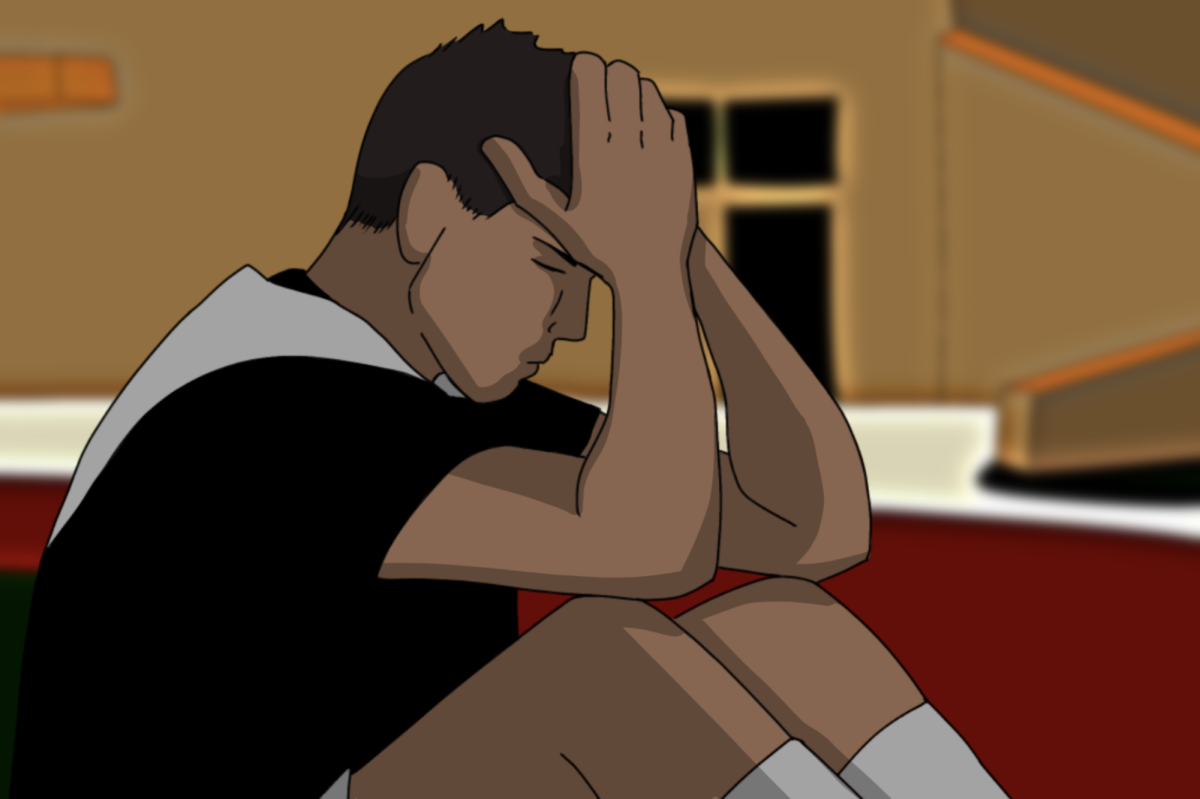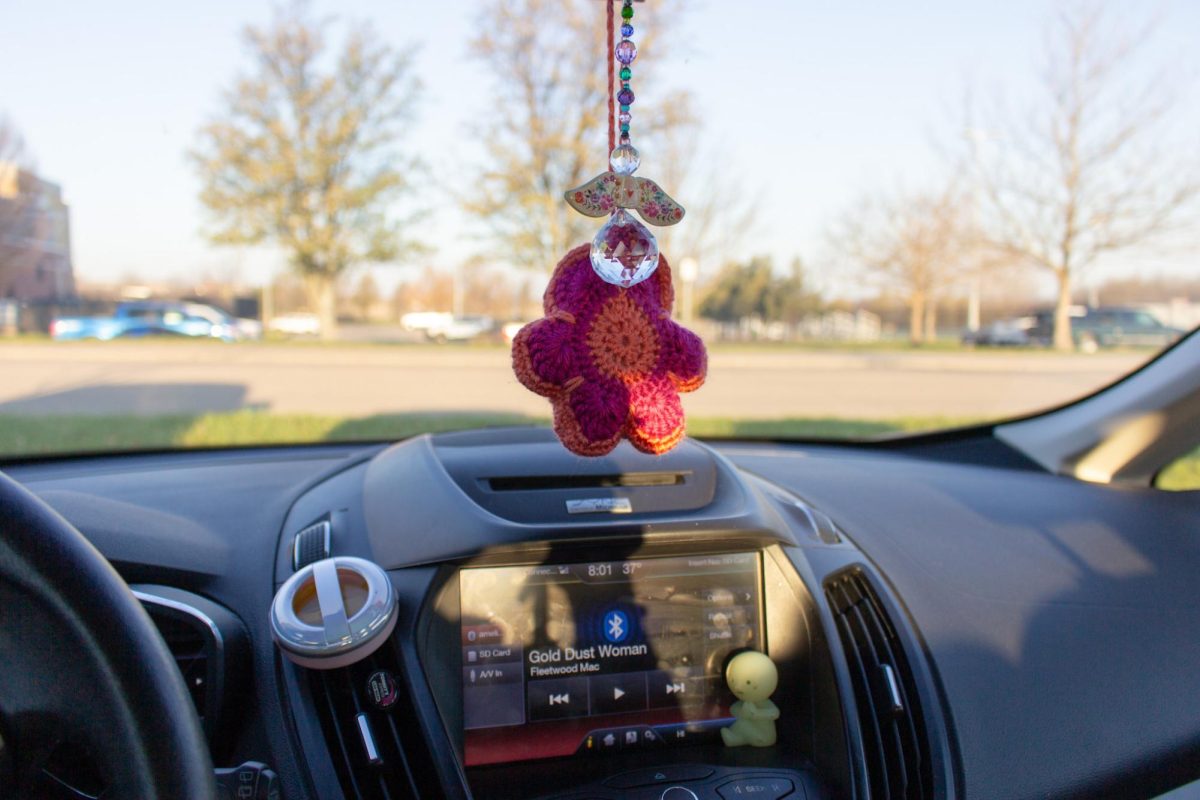What started as a way to create space in the greenhouse has become a source of beauty, collaboration and health throughout the halls. During first semester, students noticed plants starting to pop up around the school.
This was a collective effort between Sam Gleeson’s plant science class and Amanda Torbett’s woodworking class. The students worked together to build planters for Gleeson’s overflowing plant collection.
Torbett said that the student’s work added a much-needed touch and liveliness to an otherwise plain school.
“There’s not a lot of personality, if you will, around the school or a homey feel. It just kind of softens the overall look [of the school],” Torbett said.
Plants can also be very beneficial to students’ health, Gleeson said. Many studies have proven that plants have positive effects on students’ mood, focus, attention span and productivity. One study by John Daly, Margaret Burchett and Fraser Torpy, showed that plants can improve students’ test scores by 10-14% in science, math, and English.
Along with implementing these healthy habits, senior Issac Barrett said that his goal in putting up plants was to make the school more beautiful. He loves nature and wants to share his love of plants with his peers. Barrett’s impact has led both students and teachers to express feeling better by seeing more color and life.
“It makes the students more happy. It makes me happy, I like to see plants around,” sophomore Hannah Yagadece said. “The school is kind of dull and the plants really livened up the place and I liked how much color there was, even if it was just green.”
Creating and executing a vision that worked in the school was a significant challenge for the student groups. Through the use of communication, they were able to problem-solve and successfully create a final product.
Woodworking students, junior Waleed Alky and sophomore Adrian Mendoza said that they learned a lot throughout the process of creating the planters. The communication process was a big obstacle that they had to figure out and an important takeaway for the pair.
“You need a lot of planning, and a lot of communication between your team, and their team. If they don’t really communicate that well they’re not going to be satisfied.” Alky said.
Torbett said that real-world client interaction was a very interesting and unique opportunity and taught her woodworking students very valuable lessons.
“They suddenly understood why you need clear blueprints and clear descriptions, and clear plans and all that boring stuff that is so important,” Torbett said. “They had a really good time building it. They took a lot of pride in it.“
The plant science and woodworking classes weren’t the only ones who added plants to the school. Ceramics teacher, Jacob Lewis, has been given many plants over the years from people who are no longer willing to take care of them. He brought these plants into the school, giving them a new life.
“I’m kind of like a plant magnet. People see me taking care of plants and they have plants that they don’t want to take care of and they’re like ‘I’m just going to give you this plant, it’ll be your responsibility now,’” Lewis said.
Lewis contributed about seven of the larger plants in Free State, mainly because he ran out of space in his house. Over the summer, the plants reside in his backyard, soaking up sunshine and thriving in the rain. However, his house isn’t big enough and he doesn’t have a garage with enough heat to sustain the plants over the winter. So like he did when he taught at Broken Arrow, he brings the plants into the school to shelter them from the elements throughout the winter.
Along with the added benefits of keeping the air fresh, the plants seem to have a psychological and possibly spiritual healing effect on people, Lewis said. He also thought students seem to really connect with the plants, and spaces with plants seemed to be more inviting and pleasant.
“[Students] enjoyed the space and the space was warm and welcoming but there’s something about plants that I think, it’s the green, the natural benefit of cleaning the air and retaining moisture and humidity,” Lewis said.
Gleeson said that while the plants just make the school more pleasant to be in, there is also scientific research indicating that having living things in your view can improve focus and attention span.
“There’s definitely research on the benefits of having living things even just in your view,” Gleeson said. “The more green you can see, generally it will help increase your mood, it can help with focus, it can do a lot of things,”
According to a Time Magazine article, plants are scientifically proven to improve peoples’ moods. Assistant horticulture professor at North Carolina State University Melinda Knuthsaid that being around plants greatly reduces cortisol, our stress hormone.
“We see a clear connection with the fact that being around plants improves cortisol levels in our body,” Kunth said in an interview with Time Magazine. “We hold our stress hormone, cortisol, in our saliva, and we know that this is decreased when we’re around plants.”









